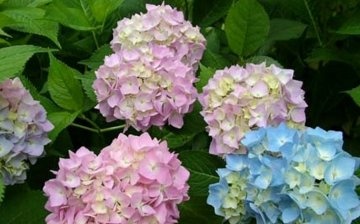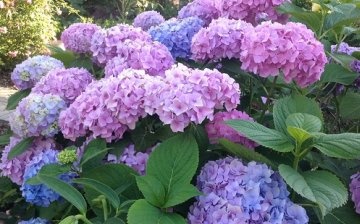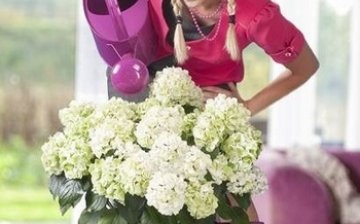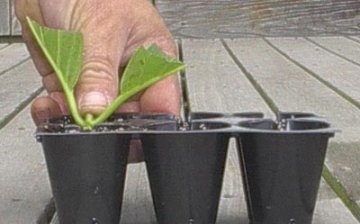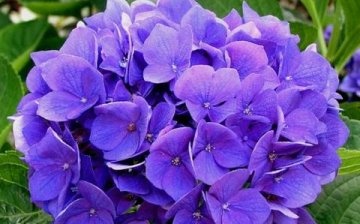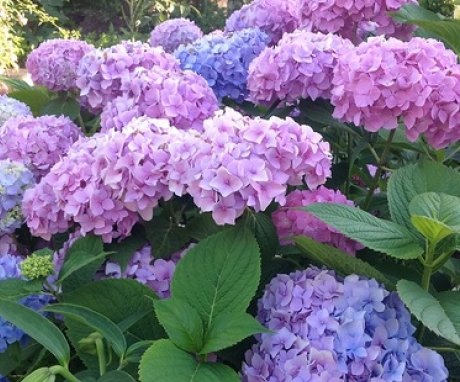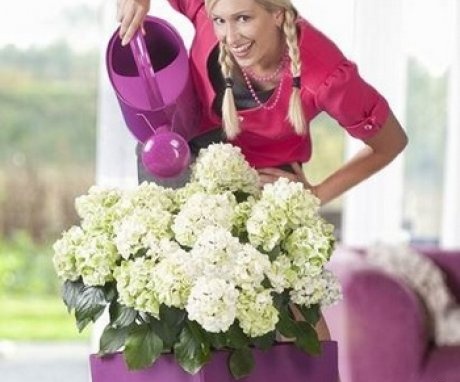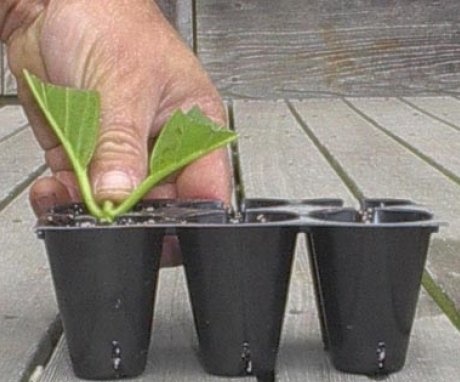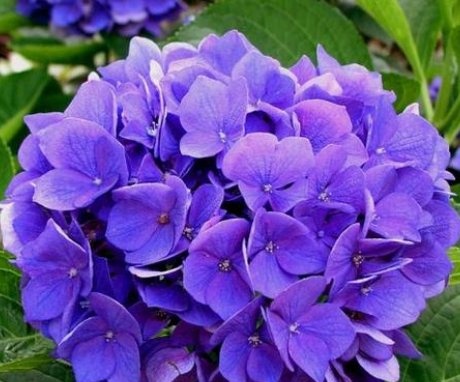Hydrangea Endless Summer: Blooming Beauty on Your Site
Hydrangea remains one of the favorite decorations for gardens and summer cottages in central Russia, as it is easy for it to create almost ideal conditions for growth. Years of breeding have allowed dozens of varieties to be developed, but one of the favorite options for gardeners is the hydrangea "Endless Summer", which received such a poetic name for its ability to re-bloom. She will delight the owner of a summer cottage all summer long with lush flowering and a pleasant aroma.
Content:
- Appearance and features of the variety
- Hydrangea care endless summer
- Propagation of hydrangea by cuttings
- Experiments with bud color
Appearance and features of the variety
Hydrangea macrophylla is the Latin name for one of tall varieties of hydrangea... The bush can reach 1.2-2.5 m in height, and its crown diameter can reach up to one and a half meters. This variety of hydrangea originates from America, but in Russia it has become quite widespread due to its unpretentiousness to growing conditions and magnificent flowers.
Interestingly, it was not artificially bred: the Endless Summer hydrangea is recognized as a successful spontaneous mutation, so it gives gardens and parks a truly natural beauty.
The decorative dwarf shrub has:
- Strong dark green leaves with jagged edges, from the beginning of summer it is decorated with large inflorescences, which can be blue or pinkish.
- The color of the buds depends on the acidity level of the soil in which the hydrangea grows, and many gardeners experiment with color by adding various additives to the soil.
- If the soil is alkaline, the flowers may take on a purple hue, and if there is an increase in aluminum sulfate, the buds will become bluish.
This is a perennial plant that is frost-resistant: if it is properly covered in winter, and with the onset of spring, it quickly gives off young shoots.
Buds will appear on both old and young shoots, with no more than six weeks elapsing between flowering waves. As a result, in one summer, buds can appear on each shoot not once, but twice, so this hydrangea variety fully justifies the name. The development of the variety is not finished, and now experiments are continuing to create a more frost-resistant variety and the breeding of plants with double buds. Since hydrangea blooms frequently, it is a very interesting object for observation and experimentation.
Hydrangea care endless summer
Hydrangea variety "Endless Summer" belongs to the large-leaved (macrophylla), therefore, the general requirements for this type of hydrangea are quite applicable to its cultivation.
This variety is quite suitable for amateur gardeners, since caring for it is not particularly difficult, and the result of even small efforts will delight after the first year of planting.
Basic rules for caring for hydrangea:
- Abundance of light. This is a light-loving shrub that does not like shaded places. If there is not enough sun for the hydrangea, it will grow slowly, and the flowers will be small and not so beautiful. The plant is suitable for both single planting and for creating hedges, but each shrub needs enough space.
- Good watering. The soil should always be slightly damp. Hydrangea roots quickly absorb moisture and react even to a short drought.
- This plant prefers acidic soils, in this case it will delight the owner with a beautiful shade of buds. Sometimes an additional alum solution is added to the soil to change the acidity to the desired level.
- Hydrangea can hibernate without shelter, but in this case it will slowly recover after winter, and flowers will appear much later. Because of this, it is recommended to cover the plant even before the first frost at the end of September, and remove the shelter only when the frost has definitely not come, that is, at the beginning of May.
- Top dressing is carried out twice a season: for the first time it is applied to the soil complex fertilizer, in which nitrogen predominates, and potash fertilizer is added in the middle of summer. Hydrangea grows well without feeding, it is a rather unpretentious plant.
With regular shelter, the shoots begin to grow parallel to the ground, so at first they may need support with the help of a bush holder. This will help shape the shrub.
Propagation of hydrangea by cuttings
For large-leaved varieties, this is the most common method. Seed propagation is most often used only for breeding purposes, and the amateur gardener is quite the cutting method is suitable... The best planting material is a 2-3-year-old seedling with at least three shoots. The recommended growth of a seedling is at least 70 cm.
However, if you need to quickly get a large number of plants, for example, for growing hedges or spreading a rare variety, several types of cuttings can be used.
If you purchased a small, actively growing stalk in May or early June, when properly planted, it will quickly grow its own roots and subsequently turn into a full-fledged shrub.
Sequencing:
- The lower leaves are removed from the cuttings, after which they are planted along the edges of a large pot.
- The distance between them should be sufficient so that the leaf of one plant does not touch the leaf of another, as this can provoke the appearance of rot.
- It is necessary to organize a mini-greenhouse: the pot is covered with a plastic bottle or bag and placed in a bright place. It should not be exposed to direct sunlight.
- The seedlings need to be watered periodically, the soil should be slightly moist at all times.
- After 2-4 weeks, the cuttings will take root and can be transplanted into open ground.
- If a semi-lignified stalk, cut in August and having several pairs of leaves, is used as a planting material, the planting technology will be slightly different.
- The pot with cuttings must be dug in the garden, choosing a shaded place, the seedlings are covered with a plastic bottle.
- From time to time you need to remove the bottle cap to ventilate the mini greenhouse.
- With the onset of autumn, the plantings are covered, and in the spring they remove the shelter and remove the bottle.
- The seedlings will already have a sufficient root system to grow on their own.
Sometimes completely lignified cuttings are used for reproduction, which already have 4-5 pairs of leaves.
They are cut in October, and autumn plantings have their own characteristics. All leaves are removed from the cuttings to reduce water evaporation. After that, they are also placed in a mini greenhouse and the pot is dug into the ground. After that, the hydrangea is immediately covered and not opened until the end of spring. After that, the plantings will begin to grow actively and give roots.
Experiments with bud color
Many gardeners experiment with the color of the buds by altering the acidity of the soil.
The introduction of ammonium sulfate into the soil produces a blue color of the buds, which makes the plant amazingly beautiful. If the hydrangea is grown in acidic soils without the addition of ammonium sulfate, the buds can be pink, white, purple, but they will never turn blue.The amount of color change additives ranges from 15 to 50 grams, depending on the size of the bush. Now in specialized stores you can buy ready-made substances with which you can get blue hydrangea buds.
Sometimes there are stories that it is mono to achieve buds of different colors on the same shrub, if aluminum sulfate is applied only on one side.
This is a fundamentally incorrect statement: one plant has one common root system, so any substances present in the soil enter all vessels. However, if aluminum sulfate is applied in the middle of summer, you can really see inflorescences of a different shade: those that bloomed earlier will be pink, and later ones will be blue.
Hydrangea Endless summer can turn into a real decoration for your garden... This amazing plant will give you the beauty of lush inflorescences that will delight your eyes for a very long time. Constant flowering allows you to use it to decorate the most beautiful areas, grow beautifully flowering hedges with it, or simply decorate the site with single green shrubs.
More information can be found in the video.



